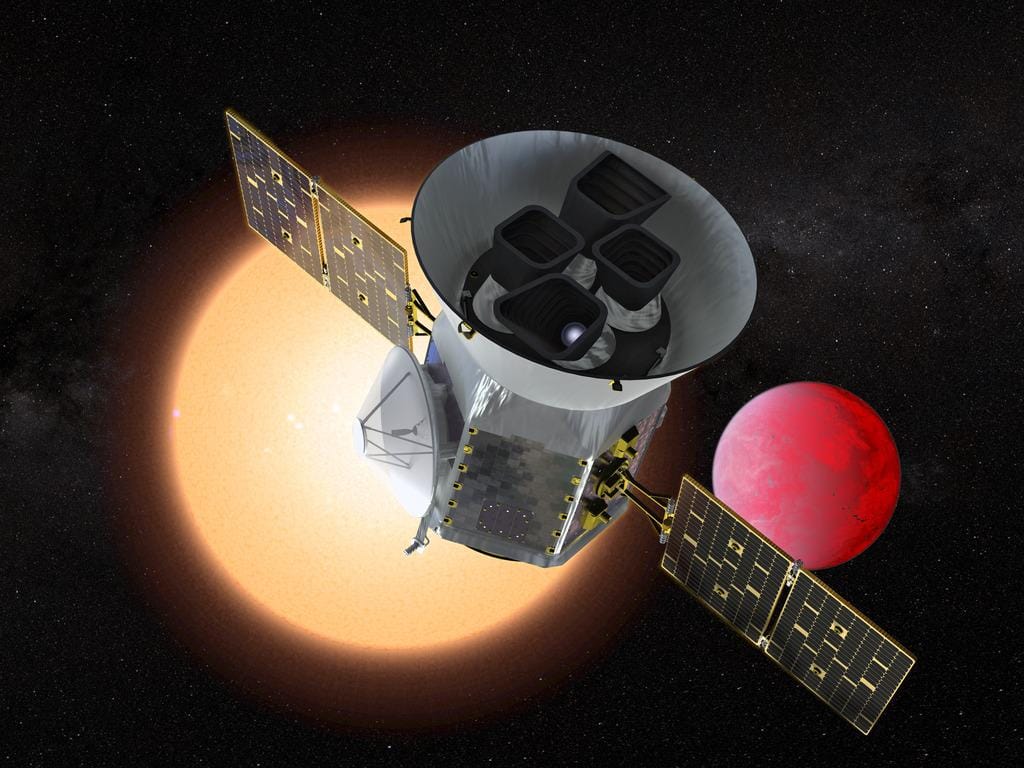NASA’s TESS Space Telescope celebrated its fifth anniversary. On this occasion, the aerospace administration talked about its main achievements.
Principle of operation of the TESS telescope
TESS was launched on April 18, 2018. The main purpose of the spacecraft is to search for exoplanets. TESS does these using the transit method — by tracking changes in the brightness of stars caused by the transits of their companions.

The telescope is equipped with four wide-angle cameras operating in the spectral range from 600 to 1000 nm. Each of them has a field of view of 24°×24°. They are oriented in such a way that together they form a single field of view in the form of an elongated strip measuring 24°× 96°. TESS observes the site for 27 days, after which it switches to the neighboring sector. At the beginning of its mission, the telescope took a picture every 30 minutes, but thanks to an increase in the data transfer rate, this figure was reduced to 200 seconds.
The main achievements of TESS
In five years of operation, TESS has covered 93% of the celestial sphere, transferring 251 terabytes of data to Earth. In total, they got over 467 thousand different objects. These are not only stars, but also supernovae, distant galaxies, supermassive black holes and various celestial phenomena.
At the moment, astronomers have managed to confirm the existence of 329 exoplanets found by TESS. Several thousand more are on the list of candidates. One of the most interesting findings of TESS was the discovery of two Earth-like exoplanets in the habitable zone around the star TOI 700 d.
Another important achievement was the discovery of three exoplanets orbiting the young sun-like star TOI 451. It is located at a distance of 400 light-years from Earth and is part of the Pisces-Eridanus stream: an open star cluster which is estimated to be 120 million years old.
TESS also managed to detect regular flares from the center of the galaxy ESO 253-3. They occur at intervals of 114 days, their source is a supermassive black hole. To date, this is the first case of detecting a black hole that absorbs matter on such a clear “schedule”.
According to https://www.nasa.gov
Follow us on Twitter to get the most interesting space news in time
https://twitter.com/ust_magazine

